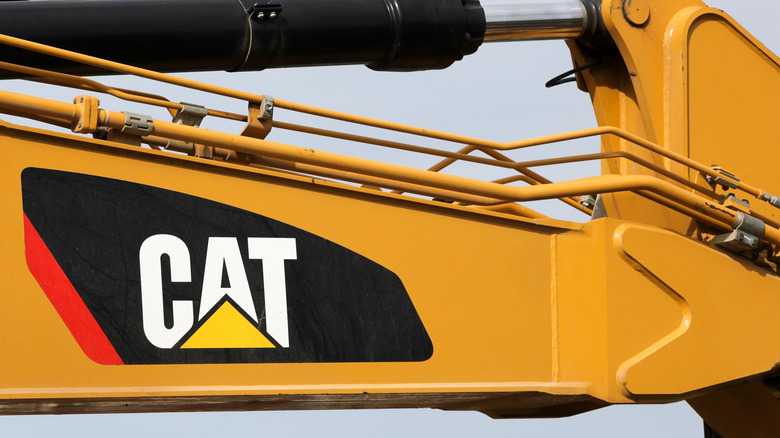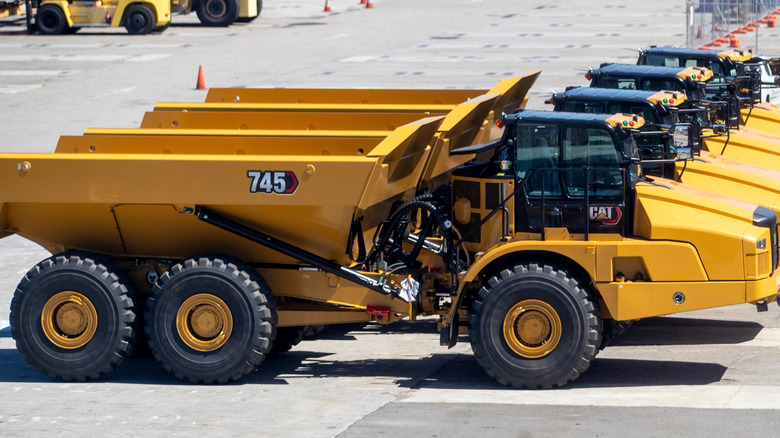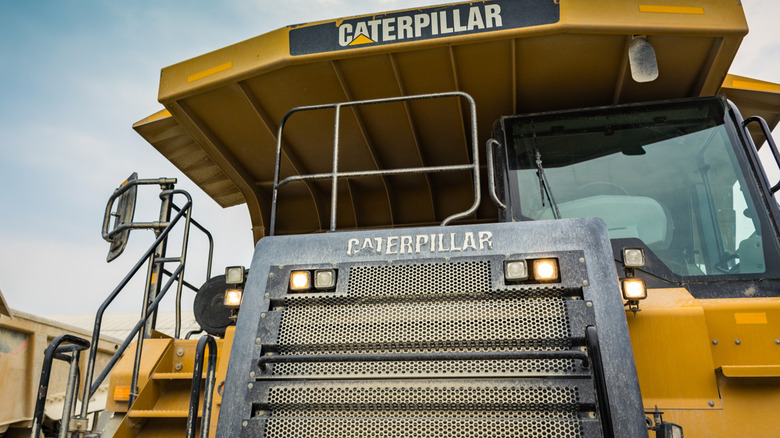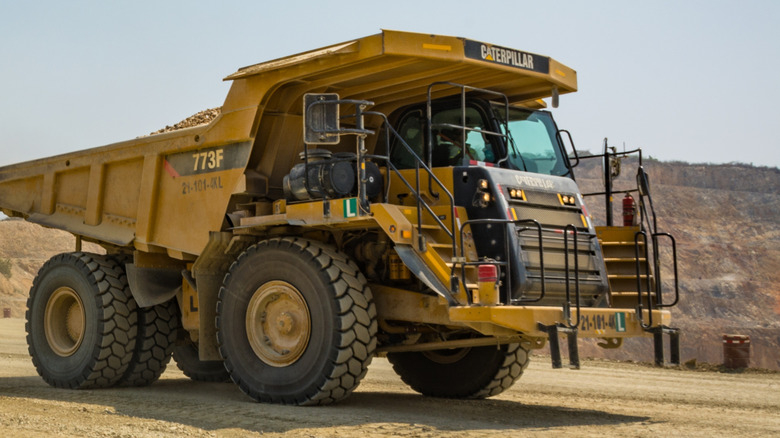CAT 3126B Vs. C7: What's The Difference Between These Diesel Engines?
When you think of Caterpillar, your mind most likely jumps to the company's extensive line of construction equipment. From bulldozers to excavators to rotary drills, you know you are probably going to see the iconic CAT branding slapped on the side of them as you pass any construction site. While these machines are what the company is best known for producing, it also produces a variety of other products, such as power tools for your home and the engines that power the gigantic machines you see on all of these worksites.
Caterpillar has a long history of producing diesel-powered engines, and in that lineage are two engines that we are going to be focusing on today: the 3126B and the C7. The 3126B was released in 1998 and was eventually replaced by the C7 in 2003. At one time, each of these engines represented the top of the line for Caterpillar when it came to powering medium-duty trucks and similarly sized construction and agriculture equipment. Although the C7 is still available for purchase today, it hasn't held that top spot for the company since 2009.
When you look at these two engines, you may not notice much of a difference at first, as one is essentially an upgrade of the other. But when you get down into the details, you will see that these two have plenty of divergences.
The power
Both the 3126B and C7 engines feature 7.2 L of displacement. The bore for both is 4.33 in., and the stroke is 5.0 in. Despite that identical displacement, the power output between the two is not the same. You might assume that because the C7 is the newer, updated engine, it would be able to generate more power, but it maxes out its output at around 300 hp, according to Caterpillar. Meanwhile, the older 3126B has a max output of 330 hp.
Of course, these are peak numbers and not how they operate at all times, which is where the C7 has more of an upper hand. Its minimum output is 225 hp, whereas the 3126B is all the way down at 175 hp. The chances of having a higher overall average horsepower output are generally greater with the C7, thanks to that higher minimum and a narrower gap between the two extremes.
It should be noted that these specs for the C7 are from the model that is currently available from Caterpillar. In the past, there have been a number of different C7 models produced that are able to generate a variety of different horsepower outputs, including some that could max out at 360 hp. However, these were exclusive to recreational and firefighting vehicles, meaning these ratings are far less common than the 300-hp max models.
The torque
While the raw horsepower numbers for an engine are great, they only tell part of the story about an engine's full performance. Another crucial aspect is torque; when these engines are tasked to handle extremely heavy machines on places like construction sites, having an increased ability to accelerate is crucial. These ratings see the Caterpillar C7 stake its full claim ahead of the 3126B, though the earlier engine still has plenty going for it when it comes to torque.
At a minimum, you can expect the 3126B to generate a respectable output of 420 lb.-ft. of torque. However, the minimum for the C7 is significantly greater at 520 lb.-ft. That 100 lb.-ft. difference is major, especially at the lowest end. At the highest, the difference isn't quite as big, but the C7's output of 925 lb.-ft. still is able to trump the 860 lb.-ft. of torque for the 3126B.
The key to these gaps in torque performance is the rotations per minute each engine is able to achieve. At peak torque performance, the 3126B can generate 1,440 rpm, which doesn't hold a candle to the C7's minimum performance of 1,800 rpm. When you take the torque to peak performance, you are looking at 2,200 rpm, and that's where you get major gaps in torque performance despite the engines being so similar.
ACERT technology
One thing that every engine manufacturer has to contend with is the evolving restrictions on fuel emissions. These emissions play a major role in accelerating climate change, and any way to reduce that footprint is welcome. Because of this, companies need to figure out technologies to reduce emissions without sacrificing power. In the early 2000s, Caterpillar developed ACERT or Advanced Combustion Emissions Reduction Technology. One of the very first engines to utilize this was the C7 in 2003, though the actual first was the C9.
Rather than trying to reduce the emissions after the engine generates power, ACERT looks to reduce them at the actual point of combustion through improved electronic systems, particularly in regards to fuel injection and equipment like a closed crankcase breather. Depending on the model of C7, it would also utilize one or two turbochargers to increase and better control the airflow within the engine.
Because this ACERT technology didn't make it to production until 2003, the 3126B engine never received this upgrade. As a result, using one of these older engines will leave you with a higher level of fossil fuel emissions than the C7. These are the kinds of technological upgrades you hope to see as a company like Caterpillar improves its products.



